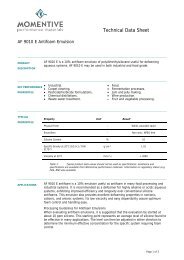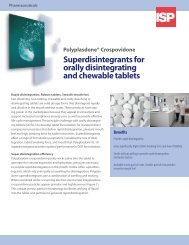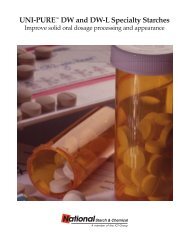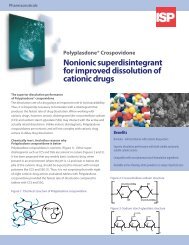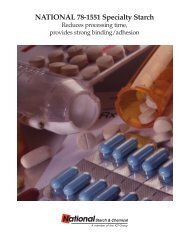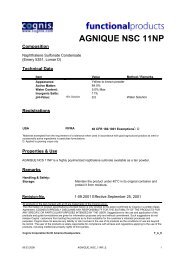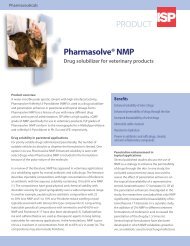Inert Lubricants Oils – Greases – Waxes - Anshul Life Sciences
Inert Lubricants Oils – Greases – Waxes - Anshul Life Sciences
Inert Lubricants Oils – Greases – Waxes - Anshul Life Sciences
You also want an ePaper? Increase the reach of your titles
YUMPU automatically turns print PDFs into web optimized ePapers that Google loves.
Quality Assurance<br />
Halocarbon oils are inert because they are fully halogenated. Even small amounts of<br />
hydrogen would make them vulnerable to attack by many chemicals. To be sure there<br />
is no hydrogen in our oils, we use an infrared analysis that can detect less than 10 ppm.<br />
Halocarbon rigorously excludes any hydrogen in its processing and then tests for its<br />
absence in the finished products.<br />
An exception is the rust inhibited oils. The rust inhibitor contains hydrogen. However, testing<br />
has shown that our oils containing the rust inhibitor have the same oxygen compatibility as<br />
uninhibited oils (see Oxidizer <strong>Inert</strong>ness Tests, p. 5).<br />
Another possible reactive site is what chemists call “unsaturation.” If unsaturation is present, it<br />
will react over time with air and moisture to form acids, which are corrosive to metals. The oil<br />
processing is carefully controlled to eliminate any unsaturation. Our specification involves a very<br />
sensitive permanganate oxidation test, which rules out all but traces of unsaturation in our oils.<br />
Acidity, for obvious reasons, is undesirable in lubricating fluids. Halocarbon specifies that our<br />
oils contain less acidity than would be titrated with 0.0002 mg KOH/g of oil; that is essentially<br />
no acidity.<br />
Halocarbon maintains very strict standards for quality both in our processing steps and in our<br />
finished products.<br />
Toxicity<br />
There have been several toxicity studies on various grades of Halocarbon oils. The most<br />
significant of these studies was performed on a 3 centistoke oil, using the inhalation route<br />
of exposure for both rodents and primates. Based on all the available data in three species<br />
of animals, limited exposure to Halocarbon oil should not be harmful. Studies conducted<br />
by the US Air Force have demonstrated liver toxicity in rodents, but not in primates. The<br />
observed liver toxicity is believed to be specific for rodents and not relevant to humans. All<br />
mutagenicity studies were negative.<br />
Halocarbon oil is not irritating to skin but simple skin protection should be used to prevent<br />
exposure and the possibility of sensitization.<br />
back to Contents 16



